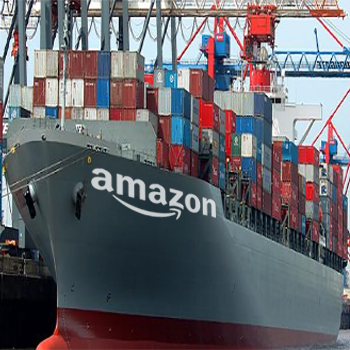The registration is the latest indication that Amazon plans to expand its logistics reach to cut costs for its retail business and potentially provide third-party logistics services to other industries.
Its new status as a freight forwarder, or “non-vessel operating common carrier,” gives Amazon, the world’s largest online retailer, a foothold in the $350 billion a year ocean freight business. It will not operate ships but subcontract that work.
Amazon is already negotiating a deal to lease 20 jets to start an air-delivery service in the United States. The retailer bought truck trailers to add shipping capacity and started a program last year that uses a fleet of on-demand drivers to deliver packages.
“It has more and more control over the supply chain of their business and it gives them the ability to squeeze (costs) even further,” said Satish Jindel, a logistics consultant and president of SJ Consulting Group.
He added the move gives Amazon an even bigger edge against traditional U.S. retailers in negotiating lower prices for goods.
The Federal Maritime Commission, a U.S. government agency that regulates the U.S.-international ocean transportation system, said on Thursday a business named Beijing Century Joyo Courier Service Co Ltd, with the trade names Amazon China, Amazon.CN and Amazon Global Logistics China, was registered in its database to provide ocean freight services.
Amazon China submitted its registration request on Nov. 9, the commission said Thursday, and it was reviewed and registered on Nov. 13. It is the entity’s first registration.
“Amazon’s ocean freight services will be far more attractive to Chinese sellers than to American buyers. Chinese suppliers would love direct access to Amazon’s vast American customer base,” wrote Ryan Petersen, chief executive officer of Flexport, a San Francisco-based freight forwarder who first wrote about Amazon’s registration on his company blog.
Petersen added that Amazon’s third-party merchants were unlikely to use its shipping service because it would expose key data like wholesale pricing and supplier names to a rival.
Why Amazon Will Make a Fantastic Ocean Freight Forwarder
Ocean freight is cheap right now. As of January 2016, Flexport’s ocean freight customers were paying less than $1300 to ship a 40-foot container from Shenzhen to Los Angeles.
More than 10,000 parcels can fit in a single container, so the price for the ocean freight leg could be as low as $0.135 per parcel. Here’s another way to think about that figure: Right now it costs under $10 to ship a flat screen television across the Pacific.
With ocean freight itself so low, a considerable portion of logistics costs come through labor costs - particularly compliance and coordination of cargo handoffs between different players in the chain. It’s here that automation, something no traditional freight forwarding company can do even one percent as well as Amazon can, becomes the key competitive advantage over legacy freight forwarders.
By using software to eliminate additional transaction costs associated with government filings, status updates, pricing, booking and more, Amazon will be able to cut their costs significantly. At the same time, fulfilling products directly from China to consumers in the U.S. will cut handling costs at U.S. warehouses.
If we’ve learned anything from Amazon’s strategic playbook over the last two decades, we can expect that it will price freight as close to marginal costs as it can get.
With the integration of its worldwide network of fulfillment centers and the combination of its new fleet of cargo jets, Amazon will be able to build a world class logistics platform for small and medium sized Chinese businesses.
Source: Ryan Petersen Blog
Image: Milestone Logistics
Related: Amazon Starting its Own Air Cargo Operation

Article topics
Email Sign Up


















